In the latest research on Kaposi’s Sarcoma, there have been promising advances in treatment that offer renewed hope for patients. This rare cancer, which mainly affects individuals with weakened immune systems, has seen new breakthroughs in therapies and targeted treatments. Scientists and medical professionals have been tirelessly working to uncover potential solutions to combat the disease, and their efforts have not gone unnoticed. By expanding our understanding of Kaposi’s Sarcoma and developing innovative treatment options, we are taking significant strides towards improving the lives of those affected by this devastating condition.
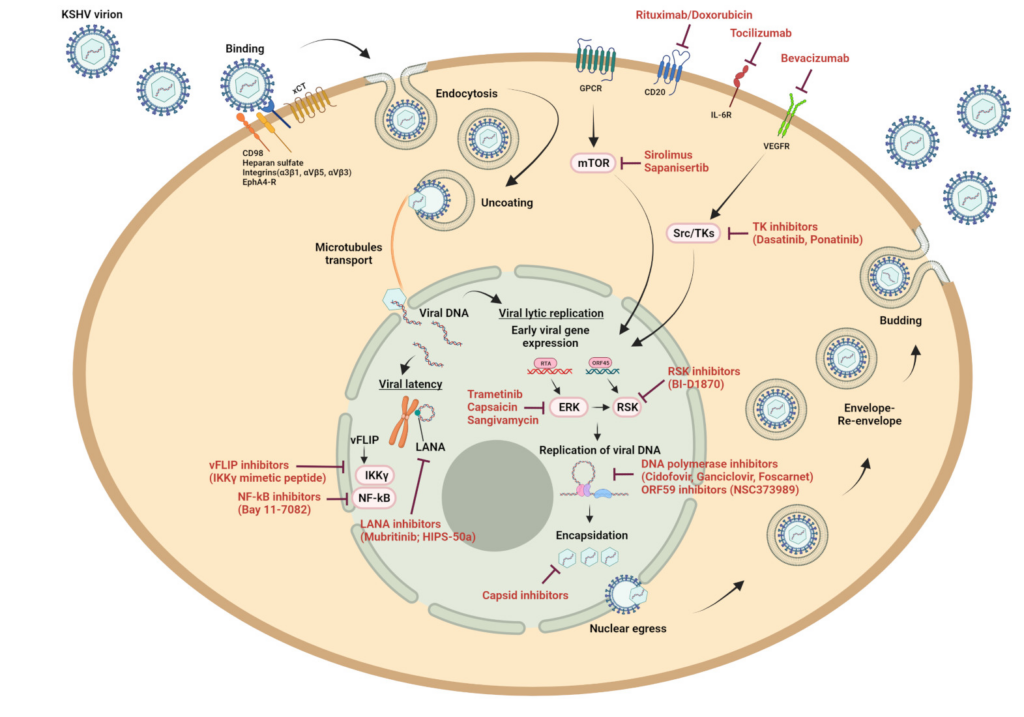
Overview of Kaposi’s Sarcoma
Definition
Kaposi’s Sarcoma (KS) is a rare type of cancer that develops from the cells that line blood vessels or lymph nodes. It is characterized by abnormal growth of blood vessels and can affect the skin, mouth, lymph nodes, and internal organs. The disease was first identified by Moritz Kaposi, a Hungarian dermatologist, in the late 19th century. KS is often associated with the human herpesvirus 8 (HHV-8), also known as Kaposi’s sarcoma-associated herpesvirus (KSHV).
Epidemiology
KS is more commonly seen in individuals with weakened immune systems, such as those with HIV/AIDS or undergoing immunosuppressive therapy. In recent years, the incidence of KS has decreased among people with HIV/AIDS due to the widespread use of potent antiretroviral therapy (ART). However, KS still remains a significant health concern, particularly in regions with a high prevalence of HIV/AIDS, such as sub-Saharan Africa.
Causes and Risk Factors
The primary cause of KS is infection with HHV-8. The virus is usually transmitted through sexual contact, blood transfusions, organ transplants, or from mother to child during childbirth. In individuals with a healthy immune system, the virus can remain dormant and not cause any symptoms. However, in individuals with a weakened immune system, such as those with HIV/AIDS, HHV-8 can reactivate and lead to the development of KS. Other risk factors for KS include older age, male gender, and certain genetic factors.
Diagnosis of Kaposi’s Sarcoma
Clinical Presentation
The clinical presentation of KS can vary depending on the subtype and location of the lesions. The most common form of KS is classic KS, which primarily affects the skin and may appear as reddish or purple patches, plaques, or nodules. In HIV-associated KS, lesions can also occur in the mouth, gastrointestinal tract, lungs, and other organs. In transplant-associated KS, lesions may develop at the site of organ transplantation or in other areas of the body. It is important for individuals with suspected KS to seek medical attention for proper diagnosis and management.
Biopsy
A biopsy is often necessary to confirm the diagnosis of KS. During a biopsy, a small sample of the affected tissue is surgically removed and examined under a microscope for the presence of abnormal blood vessels and characteristic features of KS. Biopsy can help differentiate KS from other similar conditions and guide further treatment decisions.
Imaging Techniques
Imaging techniques such as computed tomography (CT), magnetic resonance imaging (MRI), and positron emission tomography (PET) scans may be used to determine the extent of KS and assess the involvement of internal organs. These imaging modalities can help in staging the disease and monitoring its response to treatment.
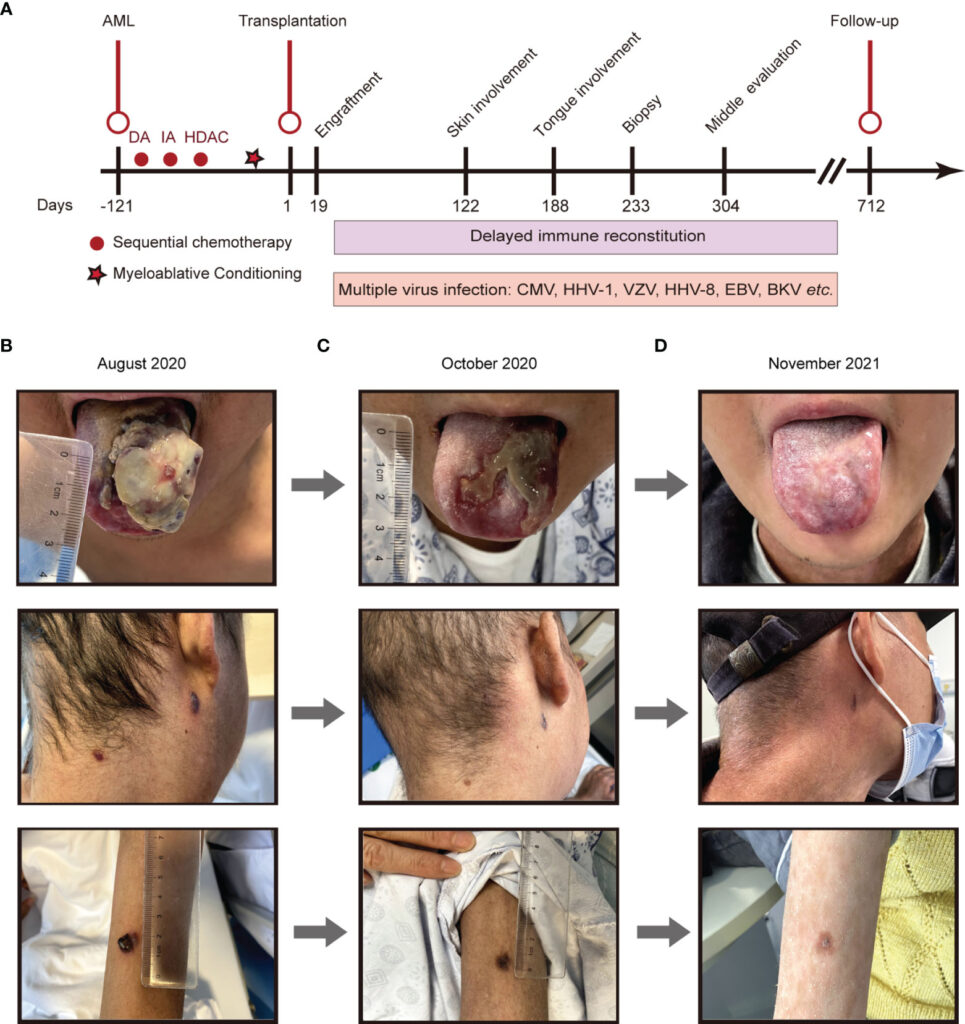
Traditional Treatment Approaches
Chemotherapy
Chemotherapy drugs, such as liposomal anthracyclines, paclitaxel, and vinca alkaloids, have been used to treat KS. These medications work by targeting rapidly dividing cancer cells and inhibiting their growth. Chemotherapy can be given orally or intravenously. Side effects of chemotherapy may include nausea, hair loss, and decreased blood cell counts. The choice of chemotherapy regimen depends on various factors, including the extent of disease, overall health, and individual treatment goals.
Immunotherapy
Immunotherapy harnesses the body’s immune system to fight cancer. In KS, immunotherapy drugs called immune checkpoint inhibitors, such as pembrolizumab and nivolumab, have shown promising results. These drugs block proteins that inhibit the immune response, allowing immune cells to recognize and attack cancer cells. Immunotherapy can have fewer side effects compared to traditional chemotherapy and may provide durable responses in some patients.
Radiation Therapy
Radiation therapy uses high-energy beams to kill cancer cells and shrink tumors. It is commonly used in localized KS or as palliative treatment for symptomatic lesions. Radiation therapy can help alleviate pain, control bleeding, and improve quality of life. Side effects of radiation therapy may include skin redness, fatigue, and temporary hair loss in the treated area. The radiation dose and schedule are tailored to each patient’s specific needs.
Latest Research Findings
Targeted Therapies
Targeted therapies are drugs that specifically target the underlying biological abnormalities in cancer cells. In KS, targeted therapies are designed to inhibit the formation of new blood vessels (angiogenesis) or block specific signaling pathways that contribute to cancer growth. Drugs like bevacizumab and pazopanib have shown promising results in treating KS by inhibiting angiogenesis.
Immunotherapies
Immunotherapies continue to be an active area of research in KS. Novel approaches, such as adoptive cell therapy using chimeric antigen receptor (CAR)-T cells, are being explored. CAR-T cell therapy involves modifying a patient’s own immune cells to recognize and kill cancer cells. Vaccines that stimulate the immune system to target HHV-8 and KS antigens are also being developed.
Combination Therapies
Combination therapies, combining different treatment modalities, are being investigated to maximize treatment efficacy and overcome drug resistance. For example, combining chemotherapy with immunotherapy or targeted therapies has shown promising results in early studies. These combination approaches aim to enhance the anti-cancer effects and improve outcomes for patients with KS.
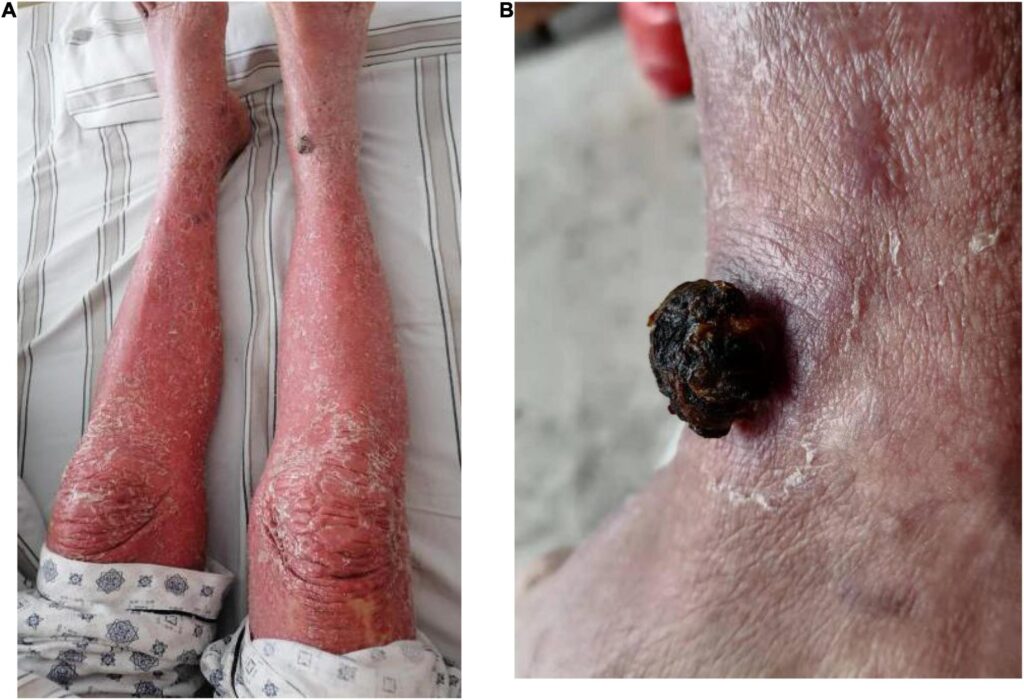
Advances in Targeted Therapies
Angiogenesis Inhibitors
Angiogenesis inhibitors work by blocking the growth of new blood vessels that supply nutrients to tumors. Drugs like bevacizumab have shown activity against KS by inhibiting a protein called vascular endothelial growth factor (VEGF). By inhibiting angiogenesis, these drugs can help shrink tumors and prevent their spread.
Signal Transduction Inhibitors
Signal transduction inhibitors are targeted therapies that interfere with specific signaling pathways involved in cancer cell growth and survival. Pazopanib, for example, is a tyrosine kinase inhibitor that targets receptors involved in blood vessel growth and cell division. This drug has demonstrated effectiveness against KS in clinical trials.
Antiviral Drugs
Antiviral drugs, such as ganciclovir and cidofovir, can directly target HHV-8 and inhibit its replication. These drugs are particularly useful in the management of HHV-8-associated diseases, including KS. While antiviral drugs alone may not be curative, they can be used in combination with other treatments to improve outcomes.
Immunotherapeutic Strategies
Checkpoint Inhibitors
Immune checkpoint inhibitors, such as pembrolizumab and nivolumab, have revolutionized cancer treatment by unleashing the power of the immune system against cancer cells. These drugs block proteins that restrain the immune response, allowing T-cells to recognize and attack cancer cells. Checkpoint inhibitors have shown promising results in the treatment of advanced KS, particularly in individuals with HIV/AIDS.
CAR-T Cell Therapy
CAR-T cell therapy involves genetically modifying a patient’s own immune cells to express a receptor that recognizes specific cancer cells. In KS, CAR-T cell therapy targeting HHV-8 antigens is being investigated as a potential treatment option. Early studies have shown promising results, but more research is needed to establish its safety and efficacy.
Vaccines
Vaccines that stimulate the immune system to recognize and target HHV-8 and KS antigens are being developed as a potential immunotherapeutic approach. These vaccines aim to boost the body’s immune response against the virus and cancer cells, potentially leading to better control of the disease.
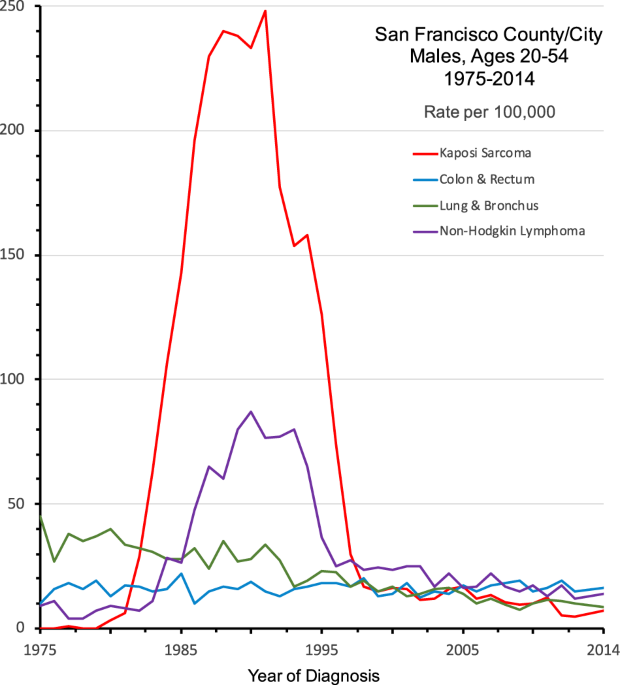
Combination Therapies
Chemotherapy and Immunotherapy
Combining chemotherapy with immunotherapy has shown promising results in various cancers, including KS. Chemotherapy drugs can sensitize cancer cells to immune recognition, making them more susceptible to attack by the immune system. This combination approach has the potential to increase treatment response rates and improve long-term outcomes.
Targeted Therapy and Immunotherapy
Combining targeted therapies with immunotherapy can enhance treatment outcomes by targeting both the cancer cells and the immune system. These combination regimens aim to disrupt specific signaling pathways in cancer cells while boosting the immune response against the tumor. Early studies have shown encouraging results and ongoing trials are further evaluating the efficacy of this approach in KS.
Radiation Therapy and Immunotherapy
Radiation therapy has immunomodulatory effects and can enhance immune responses against cancer cells. Combining radiation therapy with immunotherapy is an area of active investigation in KS. This combination strategy aims to create a synergistic effect, leading to improved treatment responses and long-term outcomes.
Emerging Therapeutic Approaches
Gene Therapy
Gene therapy involves introducing genetic material into cells to correct or modify their function. In the context of KS, gene therapy approaches aim to deliver therapeutic genes that can inhibit the growth of blood vessels, activate the immune system, or directly target HHV-8. Gene therapy holds great potential as a targeted and personalized treatment option for KS.
Nanotechnology
Nanotechnology utilizes nanoparticles to deliver drugs directly to cancer cells, minimizing damage to healthy tissues. In KS, nanoparticles can be designed to specifically target the tumor vasculature or deliver therapeutic genes or drugs. Nanotechnology-based approaches have shown promise in preclinical studies and may offer new avenues for the treatment of KS.
Epigenetic Modifiers
Epigenetic modifiers are drugs that can alter gene expression without changing the underlying DNA sequence. These drugs can potentially reverse the abnormal epigenetic changes that contribute to cancer development and progression. Targeting epigenetic modifications in KS is an emerging therapeutic approach that is currently being explored.
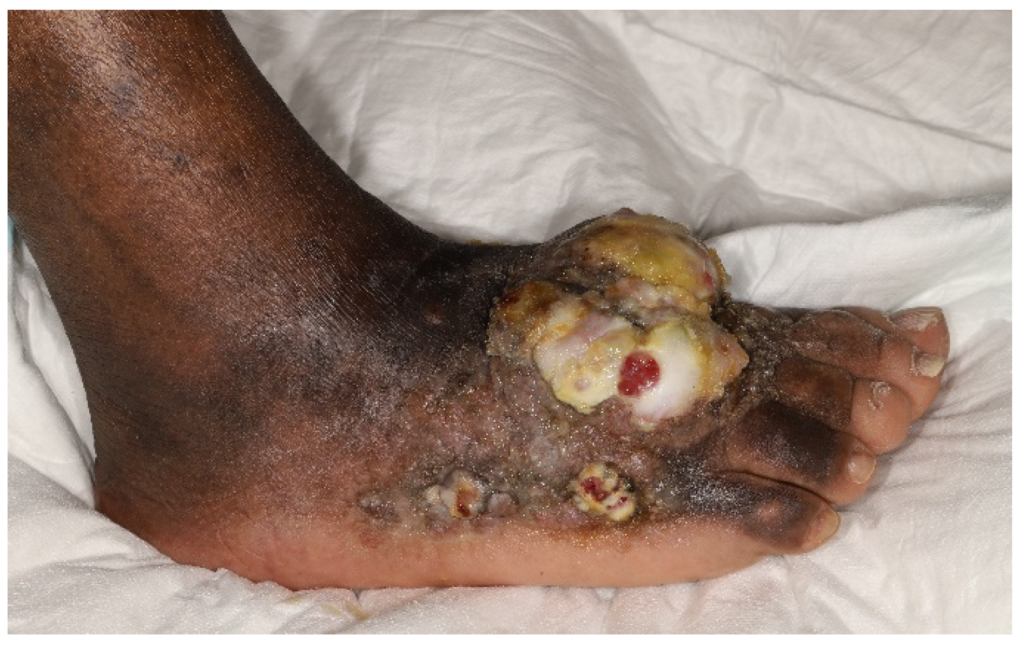
Clinical Trials and Future Directions
Promising Drugs in Development
Several new drugs and treatment approaches are currently under investigation in clinical trials for the treatment of KS. These include novel targeted therapies, immune-based therapies, and combination strategies. These promising drugs hold the potential to further improve treatment outcomes and offer new options for patients with KS.
Relapsed or Refractory KS
Relapsed or refractory KS refers to the disease that has recurred or no longer responds to standard treatments. For these patients, enrollment in clinical trials evaluating new therapies may offer the opportunity for alternative treatment options. Development of treatment strategies specifically tailored for relapsed or refractory KS remains an important area of research.
Novel Treatment Modalities
Apart from the advancements in targeted therapies and immunotherapies, other novel treatment modalities are being explored. These include oncolytic viruses that selectively infect and kill cancer cells, adoptive cell therapies using tumor-infiltrating lymphocytes, and combination approaches using multiple immunotherapeutic agents. These innovative treatment modalities have the potential to reshape the landscape of KS treatment in the future.
Conclusion
In recent years, significant advancements have been made in the understanding and treatment of Kaposi’s Sarcoma. Targeted therapies, immunotherapies, and combination treatment approaches have shown promise in improving patient outcomes. Ongoing research and clinical trials continue to explore new treatment options, and the future looks promising for patients with KS. Through continued efforts, it is hoped that better, more effective therapies will be developed, leading to improved quality of life and long-term survival for individuals with Kaposi’s Sarcoma.